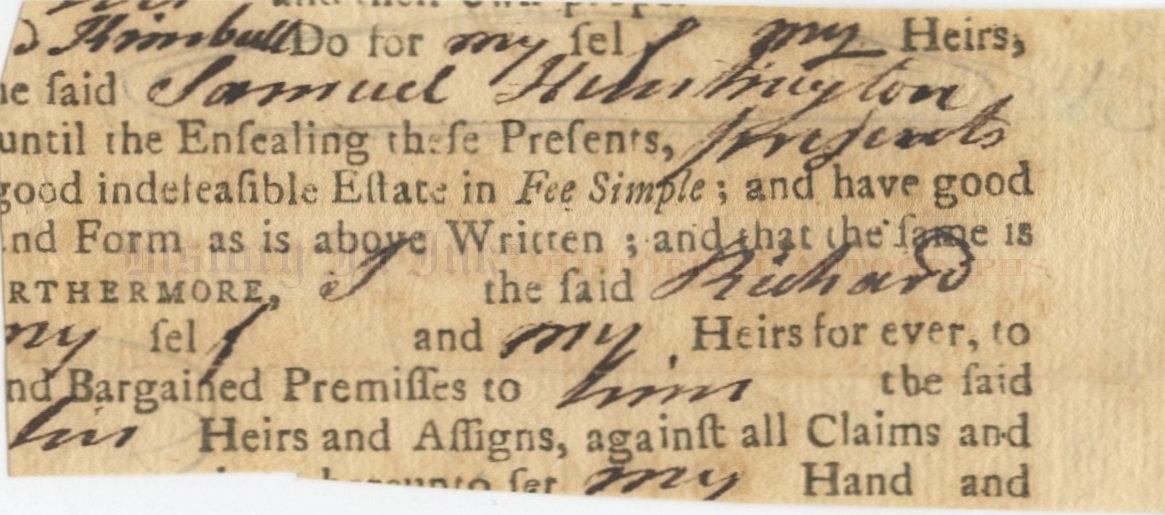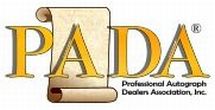1431548
Samuel Huntington
Scroll down to see images of the item below the description
The Connecticut Signer of the Declaration of Independence
acquires land in a deed from his family
Samuel Huntington, 1731–1796. Signer of the Declaration of Independence; 7th President of the Continental Congress, 1779–1781; 18th Governor of Connecticut, 1786–1796. Partially printed Document Signed, in text, Samuel Huntington, 1⅝" x 4", [no place], [no date].
This 18th Century document evidences a family land transaction. The piece has been clipped from a deed conveying an ”indefeasible Estate in Fee Simple," the highest ownership interest in real estate, to Huntington himself.
Huntington, a lawyer, prepared and signed this document in the text. There are 12 words in his hand in addition to the signature. The partial name "d Kimball" appears in his hand in the first line, and "the said Richard" appears five lines from the bottom, establishing that the grantor in the deed was "Richard Kimball." Thus, although part of the text from the original document is missing, the context of the conveyance language here shows that Huntington acquired the land either from his brother-in-law, Richard Kimball, Jr. (1725–1810), who married Huntingtonʼs older sister Abigail (1727–1820), or from Kimballʼs father, also Richard Kimball (1691–1760). Father and son were the sixth- and seventh-generation descendants of Richard Kimball of Ipswich, England, who landed at Boston in 1634.
Huntington, the oldest son out of 10 children, read law in books that he borrowed from local lawyers and was admitted to the Connecticut bar in 1754. He practiced law in Norwich, where, ten years later, he was elected to the Connecticut Assembly. He remained a member of either the lower or upper house for 20 years. In addition, he was appointed to the Connecticut Superior Court, the colonial Supreme Court, in 1773 and became its Chief Justice in 1784.
Because Huntington vocally opposed the British Coercive Acts, the Connecticut Assembly named him a delegate to the Second Continental Congress, where he joined Roger Sherman and Oliver Wolcott as the colonyʼs representatives. He voted for and signed the Declaration of Independence in 1776 and the subsequent Articles of Confederation in 1777. He became President of the Continental Congress in 1779 when John Jay was appointed the American minister to Spain.
Huntingtonʼs handwriting and signature are in dark black ink. The irregularly trimmed paper measures approximately 1½" x 4". Huntingtonʼs signature has been lightly circled in pencil, unobtrusively affecting three words of the handwritten text and barely touching the "S" in "Samuel." There are old dealer pencil notations in the upper right blank area and on the back. One horizontal fold crosses parts of four letters of the handwritten text. The piece is in fine condition overall.
Unframed. Please ask us about custom framing this piece.
Please click here to contact us regarding the availability of this item.
Click here to see more Signers and other American History autographs.




